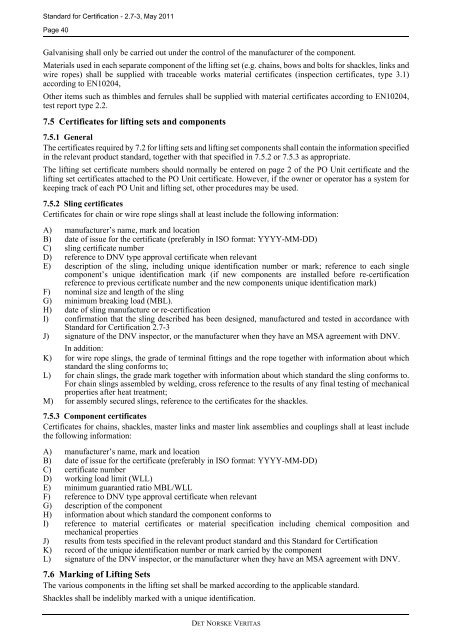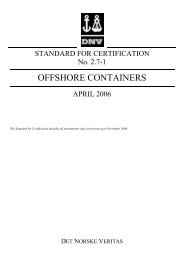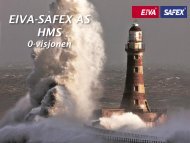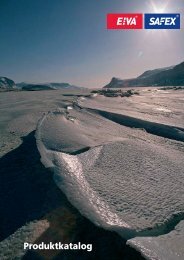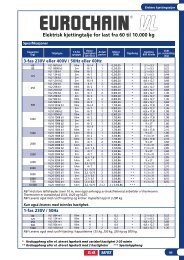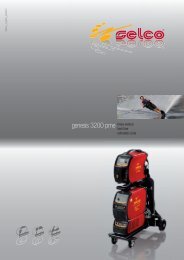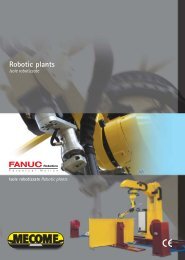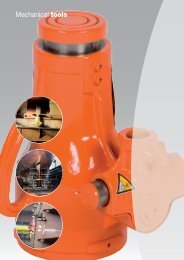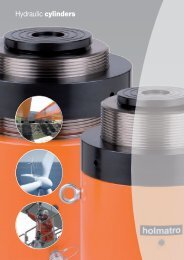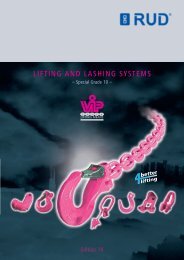atc/filer/DNV Standard 2-7-3 May 2011.pdf
atc/filer/DNV Standard 2-7-3 May 2011.pdf
atc/filer/DNV Standard 2-7-3 May 2011.pdf
You also want an ePaper? Increase the reach of your titles
YUMPU automatically turns print PDFs into web optimized ePapers that Google loves.
<strong>Standard</strong> for Certification - 2.7-3, <strong>May</strong> 2011Page 40Galvanising shall only be carried out under the control of the manufacturer of the component.Materials used in each separate component of the lifting set (e.g. chains, bows and bolts for shackles, links andwire ropes) shall be supplied with traceable works material certificates (inspection certificates, type 3.1)according to EN10204,Other items such as thimbles and ferrules shall be supplied with material certificates according to EN10204,test report type 2.2.7.5 Certificates for lifting sets and components7.5.1 GeneralThe certificates required by 7.2 for lifting sets and lifting set components shall contain the information specifiedin the relevant product standard, together with that specified in 7.5.2 or 7.5.3 as appropriate.The lifting set certificate numbers should normally be entered on page 2 of the PO Unit certificate and thelifting set certificates attached to the PO Unit certificate. However, if the owner or operator has a system forkeeping track of each PO Unit and lifting set, other procedures may be used.7.5.2 Sling certificatesCertificates for chain or wire rope slings shall at least include the following information:A) manufacturer’s name, mark and locationB) date of issue for the certificate (preferably in ISO format: YYYY-MM-DD)C) sling certificate numberD) reference to <strong>DNV</strong> type approval certificate when relevantE) description of the sling, including unique identification number or mark; reference to each singlecomponent’s unique identification mark (if new components are installed before re-certificationreference to previous certificate number and the new components unique identification mark)F) nominal size and length of the slingG) minimum breaking load (MBL).H) date of sling manufacture or re-certificationI) confirmation that the sling described has been designed, manufactured and tested in accordance with<strong>Standard</strong> for Certification 2.7-3J) signature of the <strong>DNV</strong> inspector, or the manufacturer when they have an MSA agreement with <strong>DNV</strong>.In addition:K) for wire rope slings, the grade of terminal fittings and the rope together with information about whichstandard the sling conforms to;L) for chain slings, the grade mark together with information about which standard the sling conforms to.For chain slings assembled by welding, cross reference to the results of any final testing of mechanicalproperties after heat treatment;M) for assembly secured slings, reference to the certificates for the shackles.7.5.3 Component certificatesCertificates for chains, shackles, master links and master link assemblies and couplings shall at least includethe following information:A) manufacturer’s name, mark and locationB) date of issue for the certificate (preferably in ISO format: YYYY-MM-DD)C) certificate numberD) working load limit (WLL)E) minimum guarantied ratio MBL/WLLF) reference to <strong>DNV</strong> type approval certificate when relevantG) description of the componentH) information about which standard the component conforms toI) reference to material certificates or material specification including chemical composition andmechanical propertiesJ) results from tests specified in the relevant product standard and this <strong>Standard</strong> for CertificationK) record of the unique identification number or mark carried by the componentL) signature of the <strong>DNV</strong> inspector, or the manufacturer when they have an MSA agreement with <strong>DNV</strong>.7.6 Marking of Lifting SetsThe various components in the lifting set shall be marked according to the applicable standard.Shackles shall be indelibly marked with a unique identification.DET NORSKE VERITAS


